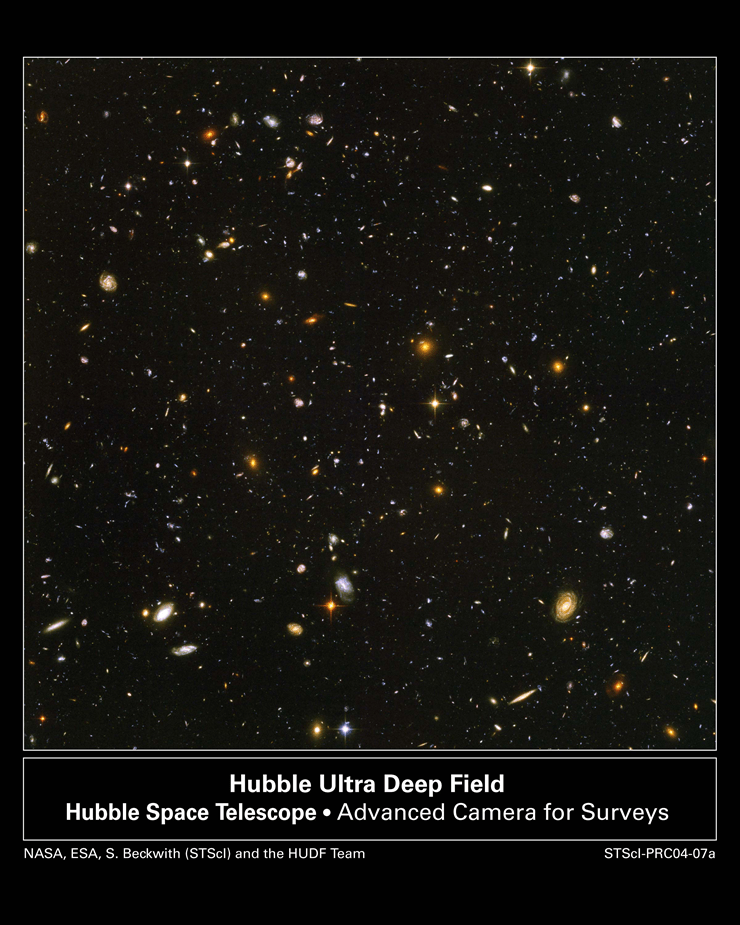The Cosmos with Hubble Ultra Deep Field
3,000 galaxies, large and small, shapely and amorphous, burning in the depths of space. The stunning image was called the Hubble Deep Field.
In subsequent years, Hubble teamed with other observatories to examine small patches of the sky in high resolution, long exposures, and multiple wavelengths. The deeper Hubble sees into space, the farther it gazes back in time. This chart illustrates the regions that have fallen under Hubble’s eye.
Surveys like the Hubble Ultra Deep Field (HUDF) and the Great Observatories Origins Deep Survey (GOODS) have provided pictures of vast, deep collections of galaxies – including some that existed when the universe was less than a billion years old.
The images allow us to follow the development of the universe. Tiny red dots — early, shapeless galaxy building blocks whose light has been stretched by the expanding universe into an infrared glow – litter the most distant parts of the visible universe. Closer in, we see numerous galaxy interactions and collisions as galaxies come together and merge, growing in the process. And nearer still, we see versions of the large, stately galaxies we know today.
